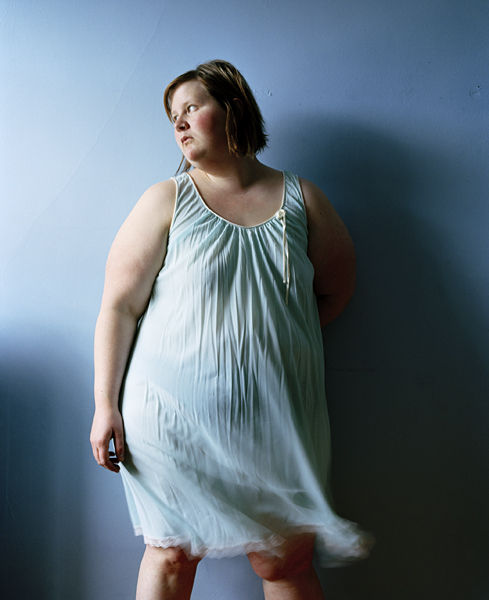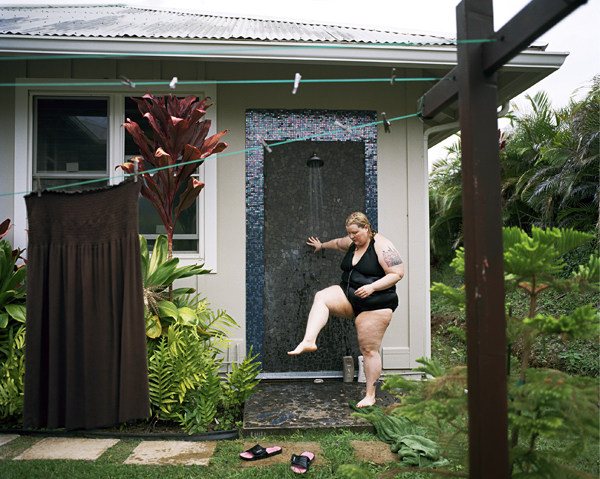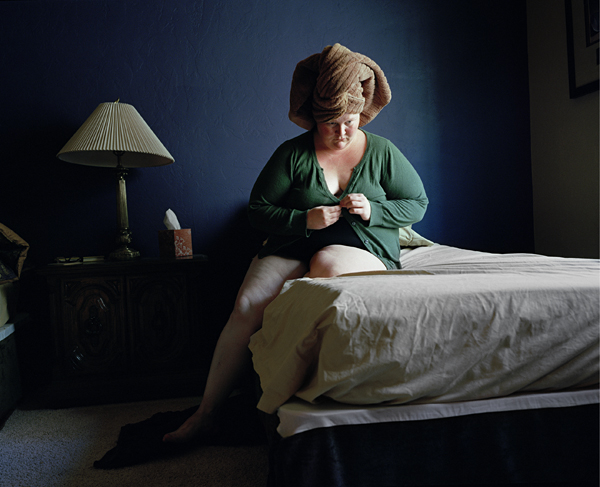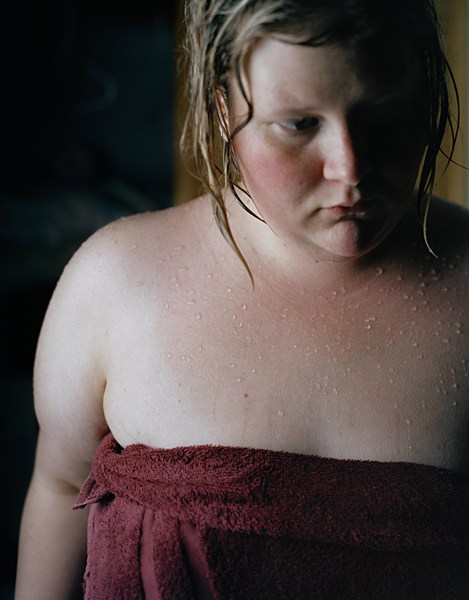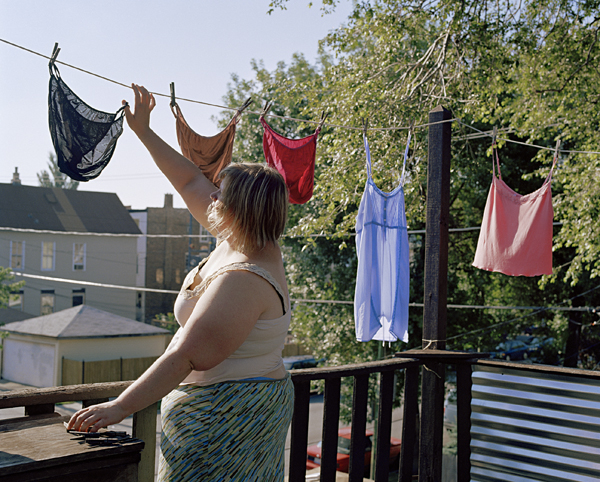
‘There is an obvious and prominent fact about human beings,’ notes Bryan Turner at the start of The Body and Society, ‘they have bodies and they are bodies.’1 However, what Turner omits in his analysis is another obvious and prominent fact: that human bodies are dressed bodies. Dress is a basic fact of social life and this, according to anthropologists, is true of all human cultures that we know about: all cultures ‘dress’ the body in some way, be it through clothing, tattooing, cosmetics or other forms of body painting.2 Conventions of dress transform flesh into something recognisable and meaningful to a culture and are also the means by which bodies are made ‘decent,’ appropriate and acceptable within specific contexts. Dress does not merely serve to protect our modesty and does not simply reflect a natural body or, for that matter, a given identity; it embellishes the body, the materials commonly used adding a whole array of meanings to the body that would otherwise not be there. While the social world normally demands that we appear dressed, what constitutes ‘dress’ varies from culture to culture and also within a culture, since what is considered appropriate dress will vary according to the situation or occasion. The few mere scraps of fabric that make up a bikini are enough to ensure that the female body is ‘decent’ on beaches in the West, but would be entirely inappropriate in the boardroom. Bodies that do not conform, bodies that flout the conventions of their culture and go without the appropriate clothes are subversive of the most basic social codes, and risk exclusion, scorn or ridicule. The ‘streaker’ who strips off and runs across a cricket pitch or soccer stadium draws attention to these conventions in the act of breaking them: indeed, female streaking is defined as a ‘public order offence,’ while the ‘flasher,’ by comparison, can be punished for ‘indecent exposure.’ As these examples illustrate, dress is fundamental to microsocial order, and the exposure of naked flesh is, potentially at least, disruptive of that order.
Indeed, nakedness, in those exceptional situations where it is deemed appropriate, has to be carefully managed (nude bathing in the UK and other Western countries is regulated and restricted; doctors must pay close attention to ethical codes of practice, and so on). So fundamental is dress to the social presentation of the body and the social order that it governs even our ways of seeing the naked body. According to the late art historian Anne Hollander, dress is crucial to our understanding of the body to the extent that our ways of seeing and representing the naked body are dominated by conventions of dress. As she argues, ‘art proves that nakedness is not universally experienced and perceived any more than clothes are. At any time, the unadorned self has more kinship with its own usual dressed aspect than it has with any undressed human selves in other times and other places.’3 Hollander points to the ways in which depictions of the nude in art and sculpture correspond to the dominant fashions of the day. Thus the nude is never naked, but clothed by contemporary conventions of dress. Naked or semi-naked bodies that break with cultural conventions, especially conventions of gender, are potentially subversive and are treated with horror or derision.
However, while dress cannot be understood without reference to the body and while the body has always and everywhere to be dressed, there has been a surprising lack of concrete analysis of the relationship between them. In this article, which is part of a larger analysis of the dressed body, I want to suggest how we might think about the dressed body and suggest some useful theoretical resources for understanding the relationship between dress, embodiment and the self. I use the term situated bodily practice to highlight how our body is embedded within the social world and fundamental to micro-social order.4 ‘Rules’ governing how we present our bodies are critically important and we risk shame, ridicule or simply discomfort if we do not present ourselves appropriately for the setting. Thus, in particular, my analysis focuses on dress and embodied subjectivity and examines the important dimensions of temporality and spatiality in our everyday experience of dress.
Nick Crossley5 suggests that there are many fruitful connections to be made between the sociologist Erving Goffman6 and the philosopher Maurice Merleau-Ponty7, particularly their insistence on subjectivity as embodied. Furthermore, Goffman’s concern with the temporality and spatiality of interaction provides another point of contact with Merleau-Ponty, whose work is concerned with these aspects of perception. In terms of providing an account of embodied subjectivity as experienced within the flow of everyday life, Goffman’s concepts have some considerable potential for understanding the dressed body. They enable description and analysis of the way in which individuals, or social actors, come to orientate themselves to the social world and learn to perform in it, and recognise how the body is central to this experience. In Goffman’s work, the body is the property of both the individual and the social world: it is the vehicle of identity, but this identity has to be ‘managed’ in terms of the definitions of the social situation, which impose particular ways of being on the body. Thus individuals feel a social and moral imperative to perform their identity in particular ways, and this includes learning appropriate ways of dressing. Like so much bodily behaviour, codes of dress come to be taken for granted and are routinely and unreflexively employed, although some occasions, generally formal ones (like weddings and funerals) set tighter constraints around the body, and lend themselves to more conscious reflection on dress. Goffman’s work thus adds to anthropologist Mary Douglas’s account of the ‘two bodies’ (the physical, and the social body) by bringing embodiment and actual bodily practices into the frame.
In considering the body as central to interaction, his analysis also lends itself to the understanding of the dressed body, and thus to an account of dress in terms of situated bodily practice. Not only does dress form the key link between individual identity and the body, providing the means, or ‘raw material’, for performing identity; dress is fundamentally an inter-subjective and social phenomenon, it is an important link between individual identity and social belonging. The sociologist Fred Davis argues that dress frames our embodied self, serving as ‘a kind of visual metaphor for identity and, as pertains in particular to the open society of the West, for registering the culturally anchored ambivalence that resonates within and among identities.’8
In other words, not only is our dress the visible form of our intentions, but in everyday life dress is the insignia by which we are read and come to read others, however unstable and ambivalent these readings may be9. Dress works to ‘glue’ identities in a world where they are uncertain. As Elizabeth Wilson puts it, ‘the way in which we dress may assuage that fear by stabilising our individual identity.’10 This idea is the basis of much subcultural theory on the symbolic work performed by members of subcultures, who, it is argued, deploy cultural artefacts such as dress to mark out the boundaries of their group and register their belonging.11
While Goffman does not discuss the ways dress is used and its role in the ‘presentation of self in everyday life,’ his ideas could however be elaborated to discuss the way in which dress is routinely attended to as part of this ‘presentation of self in everyday life.’ Most situations, even the most informal, have a code of dress, and these impose particular ways of being on bodies in such a way as to have a social and moral imperative to them. Indeed, clothes are often spoken of in moral terms, using words like ‘faultless,’ ‘good,’ ‘correct.’ Few are immune to this social pressure, and most people are embarrassed by certain mistakes of dress, such as finding one’s fly undone or discovering a stain on a jacket. As Quentin Bell puts it, ‘our clothes are too much a part of us for most of us to be entirely indifferent to their condition: it is as though the fabric were indeed a natural extension of the body, or even of the soul.’12 Thus in the presentation of self in social interaction, ideas of embarrassment and stigma play a crucial role, and are managed, in part, through dress.
Dressed inappropriately for a situation we feel vulnerable and embarrassed, and so too when our dress ‘fails’ us, when in public we find we’ve lost a button or stained our clothes, or find our fly undone. However, the embarrassment of such mistakes of dress is not simply that of a personal faux pas, but the shame of failing to meet the standards required of one by the moral order of the social space. When we talk of someone‘s ‘slip showing’ we are, according to Wilson, ‘speaking of something more than slight sartorial sloppiness’; we are actually alluding to ‘the exposure of something much more profoundly ambiguous and disturbing… the naked body underneath the clothes.’13 A commonly cited dream for many people is the experience of suddenly finding oneself naked in a public place: dress, or the lack of it in this case, serves as a metaphor for feelings of shame, embarrassment and vulnerability in our culture, as well as indicating the way in which the moral order demands that the body be covered in some way. These examples illustrate the way in which dress is part of the micro-order of social interaction and intimately connected to our (rather fragile) sense of self, which is, in turn, threatened if we fail to conform to the standards governing a particular social situation.
Dress is a crucial dimension in the articulation of personal identity, but not in the sense sometimes argued by theorists, for example, Ted Polhemus14 and Joanne Finkelstein15 who err too much on the side of voluntarism, dress as freely willed, ‘expressive’ and creative. On the contrary, identity is managed through dress in rather more mundane and routine ways, because social pressure encourages us to stay within the bounds of what is defined in a situation as ‘normal’ body and ‘appropriate’ dress. This is not to say that dress has no ‘creative’ or expressive qualities to it, but rather that too much attention and weight has been given to this and too little to the way in which strategies of dress have a strong social and moral dimension to them that serves to constrain the choices people make about what to wear. The cultural theorist Efrat Tseëlon16 has argued that dress choices are made within specific contexts, and provides good examples of the ways in which occasions such as job interviews, weddings, etc. constrain dress choices. Her work points to an important aspect of dress that requires that it be studied as a situated bodily practice. Different occasions, different situations, operate with different codes of dress and bodily demeanour, so that while we may dress unreflexively some of the time (to do the grocery shopping or take the kids to school), at other times we are thoughtful, deliberate and calculating in our dress (I must not wear that white dress to the wedding; I must buy a new suit/jacket/tie for that job interview). Furthermore, dress is also structured in the West (and increasingly beyond) by the fashion system, which, in defining the latest aesthetic, helps to shape trends and tastes that structure our experience of dress in daily life.
Crossley17 suggests that another point of contact between Goffman and Merleau-Ponty is that both take account of space in their analysis. He argues that while Merleau-Ponty is good at articulating spatiality and the perception of it, Goffman provides us with concrete accounts of how this occurs in the social world. Goffman’s18 sense of space is both social and perceptual, and provides a link between the structuralist/post-structuralist analysis of space delineated by Douglas19 and Michel Foucault20 in terms of social order and regulation, and the phenomenological analysis of space as experiential.
According to Crossley, Goffman takes the analysis of bodily demeanour in social situations further than either Merleau-Ponty and indeed Marcel Mauss. Goffman elaborates on Mauss’s ‘techniques of the body,’ not only recognising that such things as walking are socially structured, but considering also how walking is not only a part of the interaction order, but serves also to reproduce it. For Goffman, the spaces of the street, the office, the shopping mall, operate with different rules and determine how we present ourselves and how we interact with others. He reminds us of the territorial nature of space, and describes how, when we use space, we have to negotiate crowds, dark quiet spaces, etc. In other words, he articulates the way in which action transforms space. This acknowledgement of space can illuminate the situated nature of dress. If, as I have argued, dress forms part of the micro-social order of most social spaces, when we dress we attend to the norms of particular spatial situations: is there a code of dress we have to abide by? Who are we likely to meet? What activities are we likely to perform? How visible do we want to be? (Do we want to stand out in the crowd or blend in?) While we may not always be aware of all these issues, we internalise particular rules or norms of dress, which we routinely employ unconsciously.
I have argued elsewhere21 that the professional woman is more likely to be conscious of her body and dress in public spaces of work than at home or in her private office. Space is experienced territorially by professional women, who routinely talk of putting on their jackets to go to meetings and when walking around their workplaces, but taking them off when in the privacy of their offices, the reason being to cover their breasts so as to avoid unsolicited sexual glances from men. Thus spaces impose different ways of being on gendered bodies: women may have to think more carefully about how they appear in public than men, at least in some situations, and the way they experience public spaces such as offices, boardrooms, or quiet streets at night, is likely to be different to the way men experience such spaces. The spaces at work carry different meanings for women, and as a consequence they have developed particular strategies of dress for managing the gaze of others, especially men, in public spaces at work. Their strategies of dress both reflect the gendered nature of the workplace and represent an adaptation to this space in terms of their experience of it. In a similar way, women dressing up for a night out might wear a coat to cover up an outfit, such as a short skirt and skimpy top, which might feel comfortable when worn in a nightclub, but which might otherwise make them feel vulnerable when walking down a quiet street late at night. In this respect, the spaces of the nightclub and the street impose their own structures on the individual and her sense of her body, and she may in turn employ strategies of dress aimed at managing her body in these spaces.
When we get dressed we attend to these unspoken ‘rules’ (unconsciously most of the time) or ignore them at our peril, since we risk outrage, disapproval, ridicule or simple discomfort if we don’t. Our embodied subjectivity, however personal or intimate, is therefore also always social. By analysing dress as a ‘situated bodily practice’ it becomes part of an on-going, daily and ordinary practice that connects the private, sensual and intimate experience of the body to wider social norms, moral codes and standards.
Jen Davis’ images are from her series ‘Self-Portraits’, 2002–2011.
Joanne Entwistle is a a reader in cultural and creative studies at King’s College London and author of The Fashioned Body (2000/2015) and Body Dressing (2001).
This article was originally published in Vestoj On Fashion and Shame.
B Turner, The Body and Society: Explorations in Social Theory, Basil Blackwell, Oxford, 1985, p. 1. ↩
T Polhemus, Bodystyles, Lennard, Luton, 1988. T Polhemus, and L. Proctor, Fashion and Anti-fashion: An Anthology of Clothing and Adornment, Cox & Wyman, London, 1978. ↩
A Hollander, Seeing Through Clothes, University of California Press, Berkeley, 1993, p. xiii. ↩
J Entwistle. The Fashioned Body: Fashion, Dress and Modern Society, Polity Press, Cambridge, 2000. ↩
N Crossley, “Body Techniques, Agency and Inter-corporality: On Goffman’s Relations in Public”, Sociology, 129 (1), 1995, pp. 133–49. ↩
E Goffman, The Presentation of Self in Everyday Life, Penguin, London, 1971. E Goffman, Relations in Public, Pelican Books, Harmondsworth, 1972. ↩
M Merleau-Ponty, The Primacy of Perception, Northwestern University Press, 1976. M Merleau-Ponty, The Phenomenology of Perception, Routledge and Kegan Paul, London, 1981. ↩
F Davis, Fashion, Culture and Identity, University of Chicago Press, Chicago, 1992, p. 25. ↩
C Campbell, “When the Meaning Is Not a Message: A Critique of the Consumption as Communication Thesis”, M Nava, A Blake, I MacRury and B Richards (eds), Buy this Book: Studies in Advertising and Consumption, Routledge, London, 1997. ↩
E Wilson, Adorned in Dreams: Fashion and Modernity, Virago, London, 1985, p. 12 ↩
S Hall and T Jefferson (eds), Resistance Through Rituals: Youth Subcultures in Post-war Britain, Hutchinson, London, 1976; D Hebdige, Subculture: The Meaning of Style, Methuen, London, 1979; K Luck, “Trouble in Eden, Trouble with Eve: Women, Trousers and Utopian Socialism in Nineteenth Century America”, J Ash and E Wilson (eds), Chic Thrills: A Fashion Reader, Pandora, London, 1992. P Willis, “The Expressive Style of a Motorbike Culture”, Benthall and Polhemus (eds), The Body as a Medium of Expression, Allen Lane, London, 1975. P Willis, Profane Culture, Routledge & Kegan Paul, London, 1978. ↩
Q Bell, On Human Finery, Hogarth Press, London, 1976, p. 19. ↩
E Wilson, Adorned in Dreams: Fashion and Modernity, Virago, London, 1985, p. 8. ↩
T Polhemus, Streetstyle, Thames and Hudson, London, 1994. ↩
J Finkelstein, The Fashioned Self, Polity Press, Cambridge, 1991. ↩
E Tseëlon, The Masque of Femininity, Sage, London, 1997. ↩
N Crossley, “Body Techniques, Agency and Inter-corporality: On Goffman’s Relations in Public”, Sociology, 129 (1), 1995, pp. 133–49. ↩
E Goffman, Relations in Public, Pelican Books, Harmondsworth, 1972. ↩
M Douglas, Natural Symbols: Explorations in Cosmology, Barrie & Rockliff, London. 1970.; M Douglas, Implicit Meanings: Essays in Anthropology, Routledge, London, 1979. ↩
M Foucault, Discipline and Punish, Penguin, Harmondsworth, 1977. ↩
J Entwistle, “Fashioning the Career Woman: Power Dressing as a Strategy of Consumption”; M. Talbot and M. Andrews (eds), All the World and Her Husband: Women and Consumption in the Twentieth Century, Cassell, London, 2000. ↩
